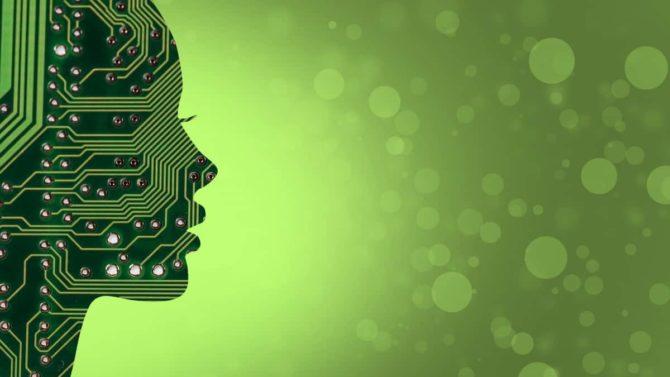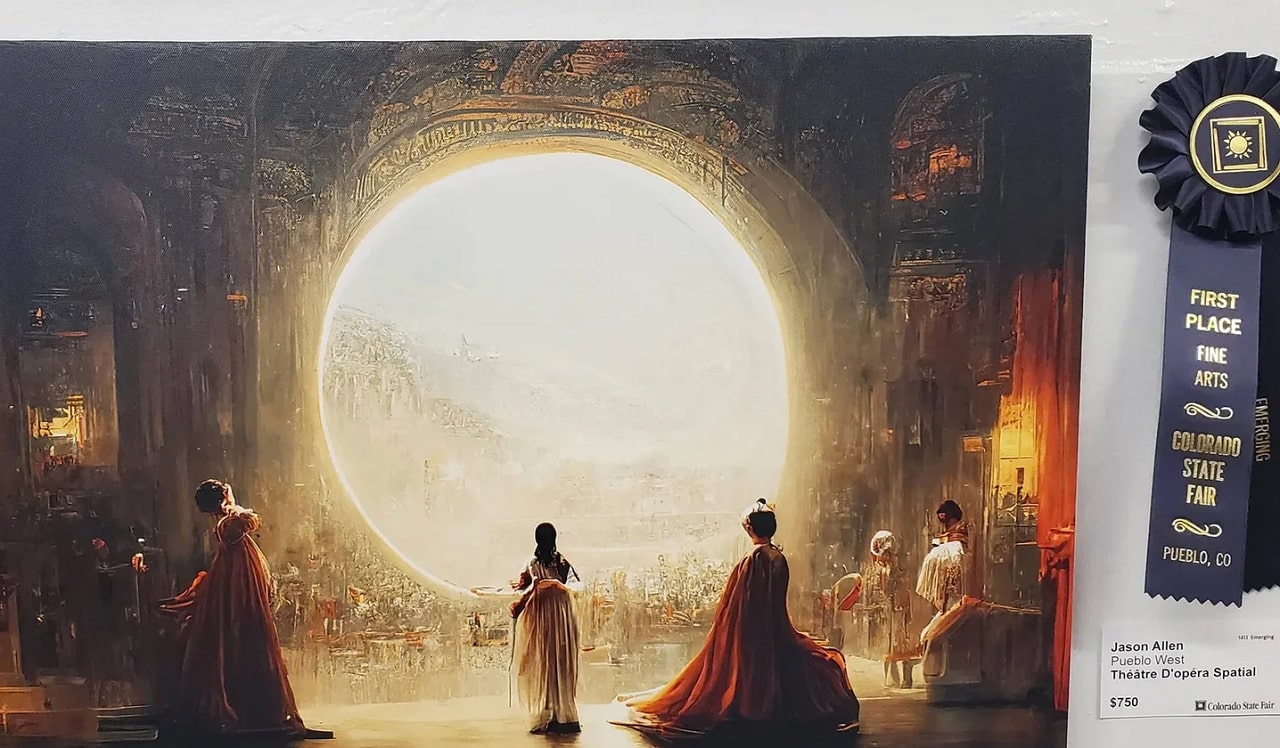That computers are able to independently create real works of art is certainly not new. The first signs in this area date back to the times ofGenerative Art of the 1980s but what were then considered experiments, now take on a new value. More and more advanced technologies and more and more intelligent computers are leading to birth new issues concerning the artthe process, the finished product and above all the “hand” that created it.
The last case that has once again disrupted the contemporary artistic scenario concerns the Colorado State Fair’s fine art competitionan American artistic competition that awarded aWork made by an AI, an artificial intelligence. The jury’s decision sparked public opinion, the press and other contestants.
But was it really such a serious choice? Can an AI win over human creativity?
The AI awarded at an art competition
Let’s analyze the case in question better. The participant in Colorado State Fair’s fine art competition is Jason Allenthe president of a board game company called Incarnate Games. The work presented to the jury is entitled Space Opera Theater (below), a sensational dreamlike image depicting the stage of a baroque Opera House overlooking a fascinating, at times futuristic scenario.
 Théâtre D’opéra Spatial, the winning opera of the competition
Théâtre D’opéra Spatial, the winning opera of the competition
Already in a few seconds the gaze is able to perceive the beauty of a captivating and well-made image and if we had not read the previous paragraphs, it would be difficult to distinguish it from a real painting. Allen indeed he did not use the brush or a graphics tablet, but an algorithm capable of creating such a job. He has indeed exploited Midjourneya software created by a research laboratory led by David Woodformer founder of the technology development company Leap Motion.
The operation of Midjourney is simple and complex at the same time. The Software uses an artificial intelligence capable of creating images based on textual descriptions entered by the user. Allen’s job was therefore to choose a sequence of words that led to the birth of this image. Not only, the author stated that his contribution would have been crucial to the success of the image. On the Midjourney Discord server he commented: “I generated hundreds of images before creating this work and after many weeks of fine-tuning and caring for the generation of the various options, I chose the 3 most beautiful and printed them on canvas” .
Midjourney is in fact able to create spectacular images but the result does not always correspond to the user’s intentions. And here is that a combination of words that seem perfect to us can generate a result that is not so satisfying. Allen’s work resulted in a work that managed to shake the soul of the jury that awarded him the first prize.
Controversy: AI vs Arts
TL;DR — Someone entered an art competition with an AI-generated piece and won the first prize.
Yeah that’s pretty fucking shitty. pic.twitter.com/vjn1IdJcsL
— GenelJumalon ✈️ Collect-A-Con Kansas City (@GenelJumalon) August 30, 2022
Needless to say, the discussions were not long in coming especially from the other competitors who have been stolen the first prize by an AI. On social media, as usual, the issue has heated up and many have called this event the “End of the art” or even the much feared victory of the machine over the mind of man. But is it really so?
Far be it from us to answer the question “is this art?”history can give us, more than a solution, at least a way of interpreting this event.
History has taught us that …
![]() Fontana – Marcel Duchamp, 1917
Fontana – Marcel Duchamp, 1917
Leaving aside the aforementioned computer-generated art of the 1980s (35 years ago), this event confronts us with the question of the act of creating art. The main problem with winning a contest with an image created by an AI is that the author did not perform the physical action of making the work. He didn’t take a hammer to carve the marble or used a brush to paint the canvas. This absence of mechanical action, according to most, takes away the right of the Author of the Work to define himself as such.
The history of art has however taught us that this way of thinking no longer has any hold in contemporary society. Already since the 1900s the Artist has freed himself from the value that, apparently, only the mechanical action of “making art” could give. Think of Lucio Fontana and the famous Cuts on the Canvas or the Ready Made works of Marcel Duchamp.
Works, artists and currents of thought that have been affirmed for decades that have upset art worldwide, they transcend the concept of “done manually“, And they acquired their value, artistic and then monetary, from the mind of those who conceived them. Just as Duchamp presented a Urinal in 1917 without altering it, except with the famous signature, today, 100 years later, Jason Allen ideally carries out the same process with the power of AI.
AIs like Bernini?

If you are still not convinced and for you Contemporary Art “doesn’t make sense” or “I don’t understand it”we can still go back in time to the much loved one Renaissance art. Among paintings, bronzes and sculptures, real and materials, which have shaped our concept of art since childhood, a similar process hides.
Well, many of the works we know and love were not made by the artist who signed them. The famous “shops”By artists of the caliber of Michelangelo or Bernini carried out, in part or totally, the projects conceived by the minds of the Masters. A work therefore not done manually by the artists mentioned above but attributed to them.
From here we can very clearly guess that the value of a work transcends any manual labor reaching much deeper, spiritual and human themes and feelings.
Feelings that no AI, however powerful, can ever take away from us.















Leave a Reply
View Comments